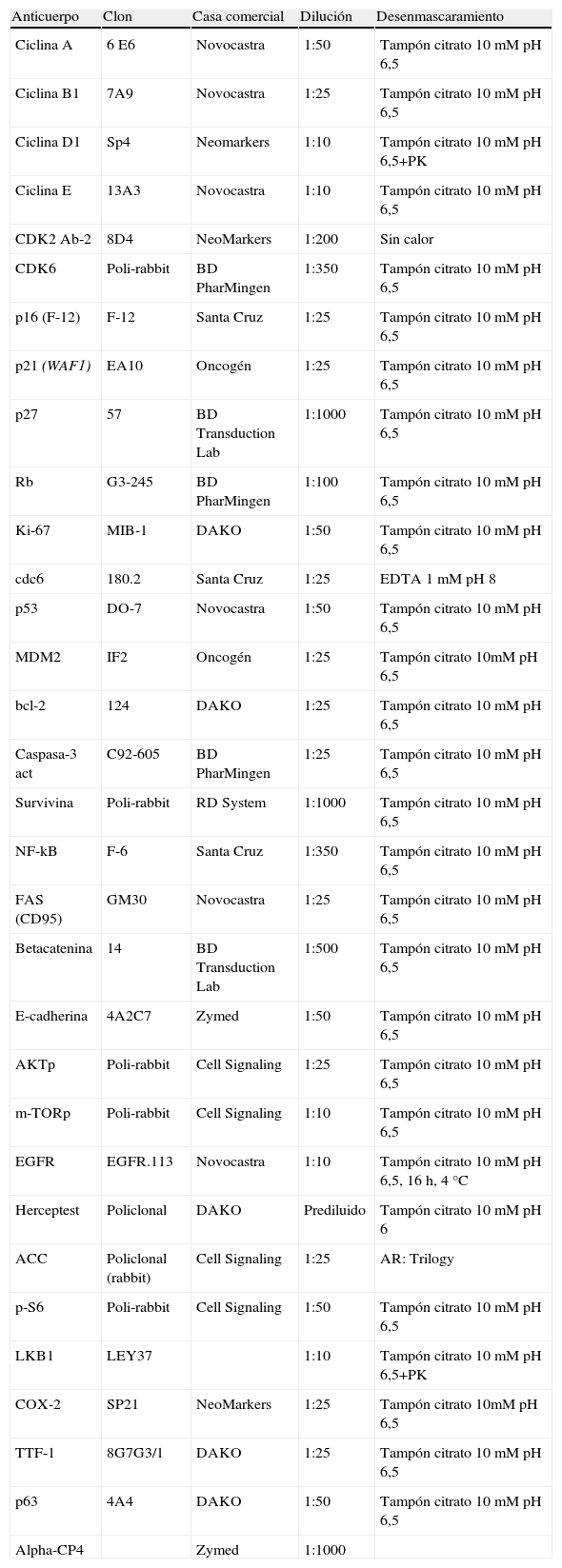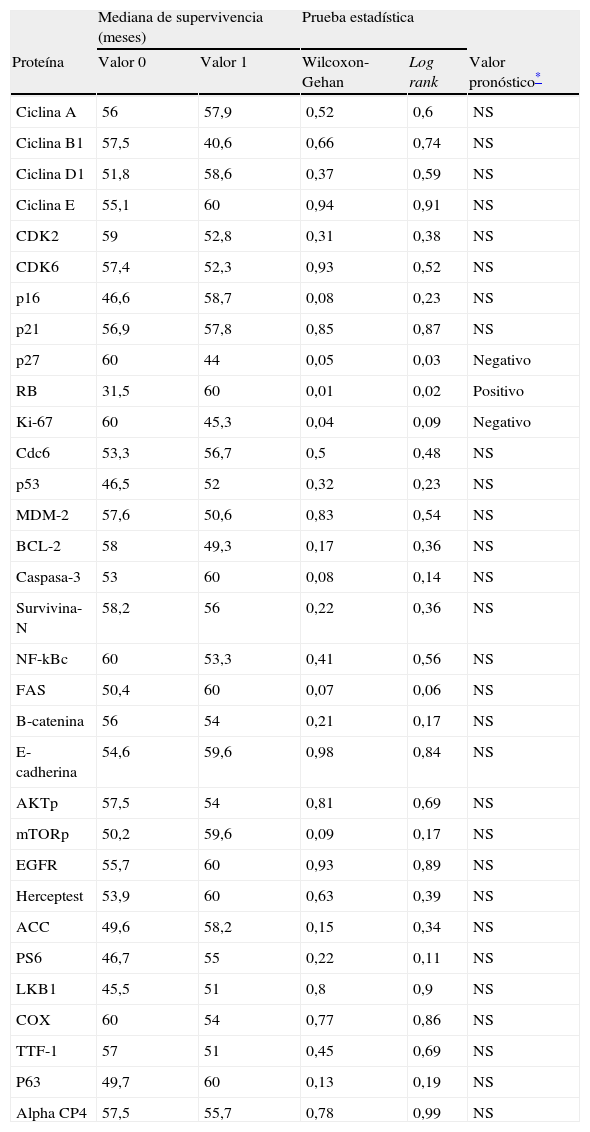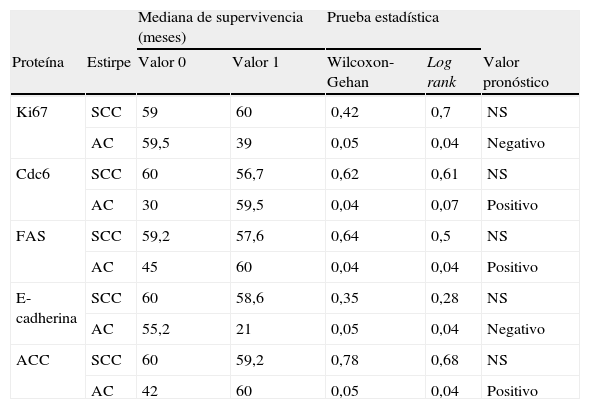Estudio pronóstico de marcadores moleculares implicados en la carcinogénesis del carcinoma broncogénico (CB), en pacientes con CB no microcítico (CBNM) resecado en estadios iniciales.
Material y métodoEstudio observacional y de cohorte de pacientes con CBNM en estadios iniciales intervenidos en el Hospital 12 de Octubre de Madrid entre el 1 de octubre de 1993 y el 30 de septiembre de 1997. Se estudiaron 32 proteínas con un análisis inmunohistoquímico semicuantitativo. Se realizó un análisis de la expresión de cada proteína en relación con la supervivencia a 5 años mediante las pruebas de Wilcoxon-Gehan y log rank, aceptando como significativo un valor de p<0,05.
ResultadosEl número final de pacientes incluidos fue de 146. La supervivencia a 5 años fue del 37,7%. De las 32 proteínas, hemos encontrado tres con significado pronóstico a 5 años: la expresión de RB, asociada a mejor pronóstico (p=0,01), y la expresión de p27 (p=0,03) y Ki67 (p=0,04), asociadas a peor pronóstico. En el análisis según histología no hay ninguna proteína con valor pronóstico en CB epidermoide, mientras que hay cinco en adenocarcinomas.
ConclusionesEn esta serie de CBNM resecado hay 3 marcadores moleculares con valor pronóstico a largo plazo en la población general y cinco en adenocarcinomas. Probablemente, en el futuro los factores moleculares se unan a los de extensión anatómica y clínicos en una clasificación pronóstica multidimensional en CB.
The aim of this study was to determine the prognostic value of molecular markers (proteins) of different paths of lung cancer development in patients with non small cell lung carcinoma (NSCLC) in initial stages.
Material and methodObservational, cohort study in patients with NSCLC that was initially treated surgically in our hospital between October 1993 and September 1997. Thirty-two proteins were selected. The study consisted of the elaboration of tissue arrays with samples from resected tumour, using a semiquantitative immunohistochemical study. A prognosis analysis was done with the expression of each protein and calculation of the overall 5-year survival rate. The Wilcoxon-Gehan and Log-Rank tests were used for statistical comparisons, with p<.05 being considered to indicate a significant result.
ResultsOne hundred and forty six patients were studied. The overall 5-year survival rate was 37.7%. From 32 proteins studied, three were statistically associated with overall 5-year survival rate. RB protein expression in resected NSCLC was a positive prognostic factor (P=.01). P27 (P=.03) and Ki67 (P=.04) expression in resected NSCLC were negative prognostic factors. There was no protein with prognostic value in epidermoid tumours.
ConclusionsWe found three proteins with long-term prognostic value in the long-term in the general population and five adenocarcinoma prognostic proteins in our study of resected non-small cell lung cancer (NSCLC). In the future, genetic-molecular factors should be included along with anatomical (TNM staging) and clinical factors in a multidimensional lung cancer staging.
Artículo
Comprando el artículo el PDF del mismo podrá ser descargado
Precio 19,34 €
Comprar ahora















